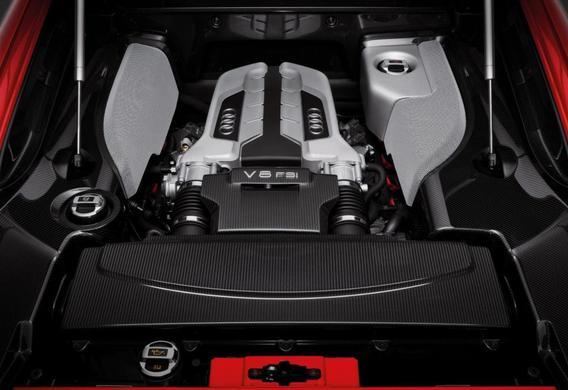
The familiar term "horse power" was offered by the inventor of James Watt in the eighteenth century. The idea came from the inventor while he was watching a horse spinning in a car that raised coal from the mine. The calculations showed that one horse could lift 150 kg of coal at an altitude of 30 meters per minute.
Nm (Newton-metre) is the unit of time in the international system of units (SI)
The horse power has become the "non-system" value for measuring capacity. One horsepower is equivalent to 735.5 W (Watt is a system unit named after the same English scientist). The horse power was subsequently used to indicate the engine power of the vehicle.
Torque
In order for the vehicle to move, the drive must be driven to the driving wheels. In the official scientific language, traction is called torque and the engine power directly depends on this characteristic.
The characteristics of the Lamborghini Aventador LP1600-4 Mansi Carbonado GT 2014 are as follows: 1600 hp and 1200 N/m torque at 6000 rpm.
The torque is the force vector that describes the rotation of the object around its axis. A simplistic concept can be represented as the force with which the object is rotated, for example, the engine flywheel. With the wrench, which from the point of view of physics is a lever, the hand makes the bolt force-that is the torque.
When the engine is running, each piston shall be driven down to a crankshaft torque. The situation is complicated by the non-constant value due to engine design. It is gradually increasing at low speed, then stabilizing, and at high speed it is starting to decline again. The torque is typically available at between 5,000 and 6,000 rpm, so that the cap shall be used when "maximum torque" is specified.
Engine power and torque link
The engine power is the physical value calculated by the simple formula in which the torque is multiplied by the so-called "angular velocity" measured in radians. Strically speaking, the formula for calculation of car power is somewhat more complex, since the angular velocity is measured not in radians, but in revolutions per minute. However, knowing how to convert one unit to another, calculate the cardinality is easy.
Engine elasticity and associated changes in power
One more important characteristic of the engine is its elasticity. The elasticity is understood to be the ratio of maximum power and torque. Simply put, the lower the engine speed at the time of maximum torque, the greater the thrust, and to increase the speed do not have to lower the gear, it will be enough to press the gas pedal.
The calculation of kW into a horsepower is produced by multiplying the kilowatt engine power by a factor of 1.35962
You can test the elasticity of the engine if you spot the acceleration time from 60 to 110 km/h. The faster the car will drive, the more flexible it is. You should not forget that you need cars equal to the weight and volume of the engine for comparison. The easiest way to feel the difference is to compare the same vehicles with different engine sizes. In the case of an engine of 1.6, the car will accelerate significantly, and the engine 1.4 is "slow" to disperse from 60 to 100 km/h, and the good performance is observed only when higher speeds are reached.
Effect of vehicle design features on power and torque
These values, such as torque and power, may vary based on the design of the vehicle. Many factors influence the dynamics of the acceleration and the maximum speed: the weight of the car, the structure of the transmission, the volume of the engine, the size of the clearance, the aerodynamic characteristics of the body, and much more.







